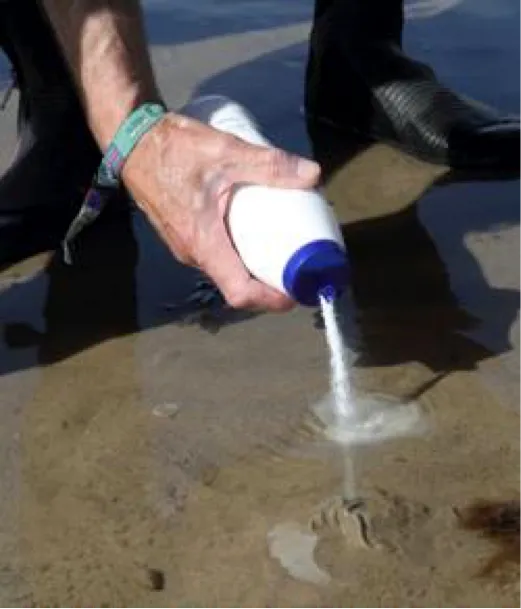When it comes to foraging, I’m a landlubber – I know my blackberries from my blackthorn and can identify a fair number of edible wild greens, which often end up in suppers. But aside from mussels, I’m all at sea when it comes to finding free food on the coast.
Alas, the coast of my native Monmouthshire/Gwent comprises endless tides and murk and only the waders and wildfowl find anything in the mudflats. Exciting for birdwatchers but lean pickings for hungry, two-legged mammals.
So when I was invited down to Weymouth by those nice people at Badger Ales for a day of foraging with John Wright – he who has taught Hugh Fearnley Whittingstall a few things over the years – I hightailed it down there.
I met John in a car park at the eastern end of Chesil Beach. He has the air of a man who has found the lost path to happiness – a simple joy in nature coupled with seeing the funny side of what he does. A refreshing change from the serious, self-aware characters who so often claim the title of environmentalist or wildlife-lover.
We began with a forage around the car park. As anyone who loves nature knows, the best stuff is always around the car park – so John said. We found marsh samphire (pronounced ‘sam-fur’ and delicious, though horribly expensive in the Dorset’s finest restaurants – image below), rock samphire (this time pronounced ‘sam-fire’) and, best of all, seabeet.

Seabeet (below) looks very like thicker, shinier, juicier spinach and is the ancestor of sugar beet, beetroot, chard and perpetual spinach. Yet, strangely it is only ever found a few hundred yards from the sea. When we braised it later in butter, it kept its shape but tasted like the finest spinach with a touch of added sweetness and a deeper, less bitter undertone. It’s so abundant and if I lived by the coast, I’d pick it everyday.

After gathering our herbage, John led us wading into clear shallow water as the tide retreated. It was sandy here and we were on the look out for tiny holes in the seabed that betrayed the presence of razor clams. The holes look like slots with a larger bulge at each end, like an elongated figure of eight.
John found a typical slot, poured some table salt into it and we waited – the salt is supposed to irritate the clam into springing out of its hole – and then you catch it. I’d seen this salt trick on tv (Hugh, of course) but in real life I struggled to believe it would work. And nothing happened.

At about the fourth hole, the indefatigable John tried again. This time there was a flurry of sand at the entrance hole and then a white tentacle (foot actually) rose out of the hole like something from War of the Worlds.

John waited a second or two and the tip of the creature’s shell appeared. He reached down, grabbed the shell edges between finger and thumb and pulled. Gently but surely, the long shell and the white-bodied clam emerged. It was a biggie and ended up in John’s foraging bucket.
I then had a go. I loved looking for those tell-tale holes. And then the thrill of the flurry of sand as the clam registered its anger. Watching the foot emerge was a bit like – I imagine – a time-lapse film of asparagus growing out of the soil. When I gripped the shell, the strength of the animal was impressive. I had to be careful – rather like lizards, razor clams will shed a part of their body (and survive) if they are being dragged from their sandy beds.

I caught four at least and between us all we had a dozen – enough for a taste on the beach barbecue.
After that, I had a horribly embarrassing moment when I found myself volunteering to don a wetsuit to help John retrieve some crab pots he’d set the day before. Putting on a wetsuit is like re-peeling a banana except that the banana is twice as big as when you first peeled it.
Like a middle-aged bogman I oafed over the rocks and stumbled out to where John was groping around for his pots. And after all that, the two pots yielded just a single velvet swimming crab.
Still, it tasted delicious when we barbecued it on Chesil Beach later. But best of all were the razor clams – a blend of scallop and squid in terms of texture and flavour –enhanced by the world’s greatest ingredient – butter.


Thanks to Hall and Woodhouse (Badger Ales) for a wonderful day and to James Peat for the great photos…
